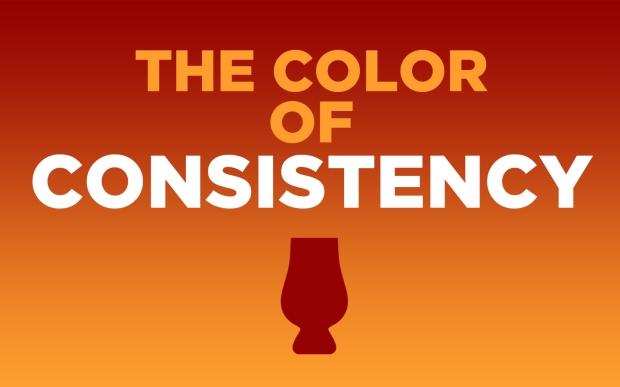
I love whisky. That’s no surprise given that I run this whisky blog. And you probably love the amber nectar too, as you’re clearly reading this post. I’m certain you’ve run across a particular phrase at one point or another during your whisky adventure.
Amber nectar.
Think about those two words for a second. Now, like the finish on a beautiful single malt, let that first word linger for a while.
Amber.
More often than not, it’s a word used to describe the color of a whisky. I’ve seen it used in countless reviews over the years, from whisky novices to seasoned spirits writers. It’s ever present in whisky tastings all over the world. The very first thing you’re told to do is hold your dram of whisky up to the light and study its color. Just like with food, appearance is the first thing you notice, right? True, but when it comes to a large percentage of whiskies, describing the color is a bit of a farce.
Here’s something you might not know – most Scotch whiskies have color added. That beautiful shade of amber is partially manufactured by the addition of E150 caramel coloring. Yep, that’s not the whisky’s natural color you’re looking at.
Brands point to consistency between batches as their reason for doing so. That might be a valid reason, but this isn’t the 1960s anymore. As Mr. Dylan wrote, “the times they are a’changin’.” We are in an era of the informed consumer. Now, more than ever, customers want to know more about what they’re drinking and how it’s made. I believe the modern consumer would be fine with a little difference in color from batch to batch.
No one’s to blame here but the whisky brands themselves.
Just look at the disappearing age statement and the recent explosion of non-age stated whisky expressions. Brands created the misconception that older is better, and now they’re trying promote the spirit based on its quality and flavor profile, not on its age. But if brands are trying to reeducate the imbibing public on age statements, why not also teach them that color isn’t always a sign of the quality or age of the spirit. The argument that “older isn’t always better” fits perfectly with a whisky’s appearance – a light colored whisky is not inferior to a dark colored one. Keep the focus on the flavor profile.
Not all brands are adding color. Compass Box, for example, does not add any color to their whiskies. I believe Highland Park and The Macallan are two big brands whose whiskies’ color comes naturally from the cask.
There’s an argument out there about whether or not the addition of E150 caramel coloring adds any flavor to a whisky, or even affects the finish. As far as I’m concerned, that’s really a stretch. All that’s affected is the spirit’s appearance.
As for bourbon, so long the words “straight bourbon whiskey” are on the label, you can rest assured nothing but water has been added. Without the word “straight”, a small amount of color and even flavor can be added.
Fellow whisky enthusiasts, you may have noticed I rarely mention color in my whisky reviews. I generally forego any color description and start with a description of aromas unless I know that no color has been added to the whisky. I cannot and will not contribute to the description of a manufactured color. It serves no purpose.
So with that, I’m off to pour a dram of whisky. It will probably have coloring added, but it’s not going to affect my enjoyment of the whisky any less. I just won’t concern myself with its color.
Cheers!
Maybe it’s a stretch.
But on a blind taste test across a number of whiskey categories every single winner I picked had no added caramel nor was chill filtered.
Coincidence? Luck? Personal taste?
My conclusion is added caramel does make a difference.
LikeLiked by 1 person
Excellent blog! If you like to know more about E150, please check out my blogpost about it! Can I post a link here?
LikeLike
By all means!
LikeLiked by 1 person
More information about E150 here:
LikeLike
I made a mess! Sorry! Please delete all not relevant replies 🙂
LikeLike